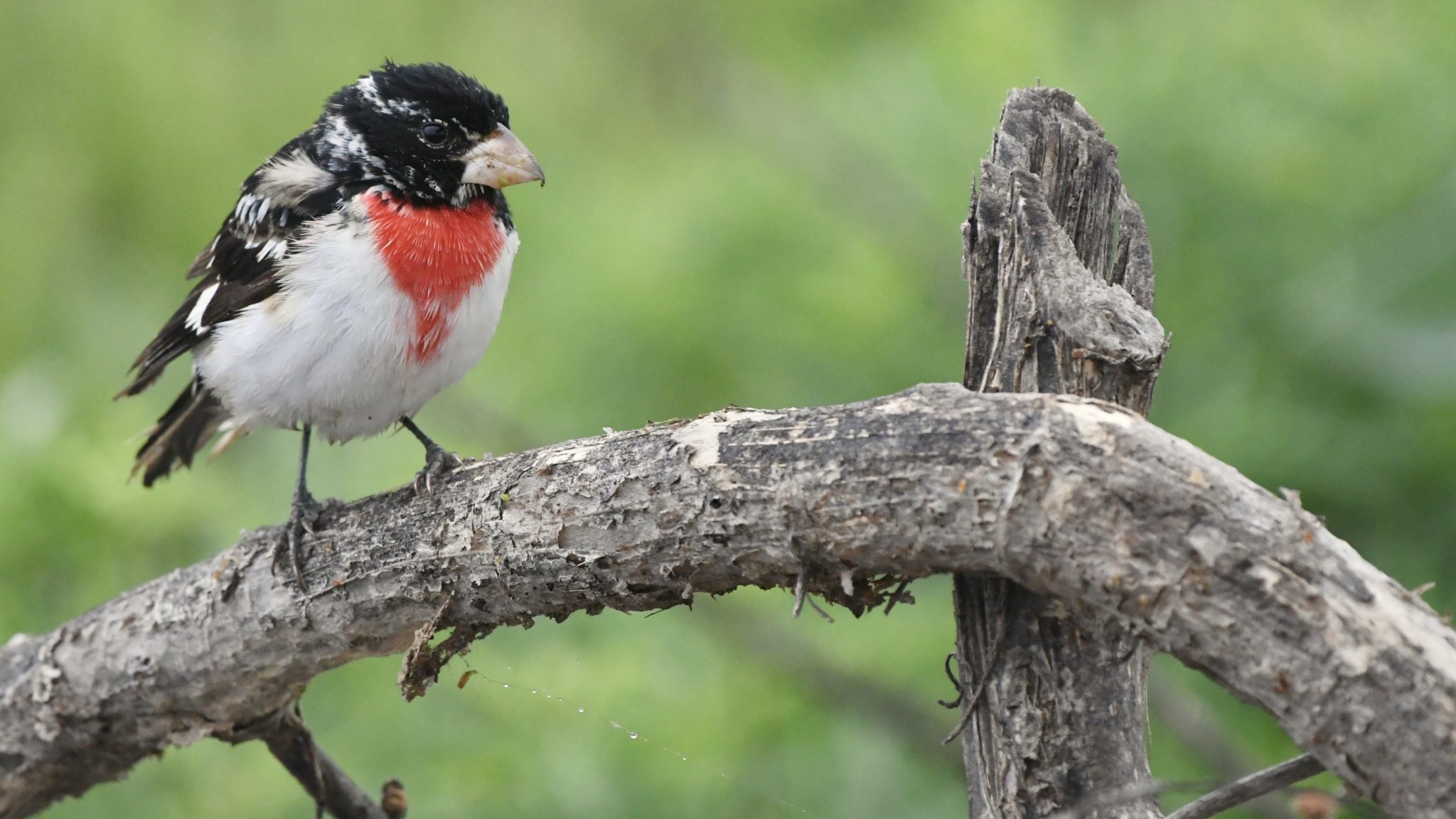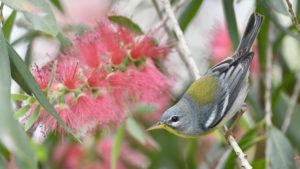
A rose-breasted grosbeak sits on a curved branch. Photos: Kyle Horton/CSU
When the Houston Chronicle recently ran a story calling for people to turn out their lights to prevent mass casualties of migratory birds, it wasn’t a surprise to researchers working on this topic. That includes Kyle Horton, assistant professor at Colorado State University and principal investigator for a research project aimed at improving ecological forecasting and exploring public opinion on protecting migratory birds from light pollution in urban areas.
With $1.5 million from the National Science Foundation, Horton will work with co-principal investigator and Assistant Professor Rebecca Niemiec from CSU’s Department of Human Dimensions of Natural Resources and a team from the University of Oklahoma as part of NSF’s growing convergence research.
As Horton explained it, and like the name implies, NSF’s Growing Convergence Research initiative is meant to unite disparate academic fields. On this particular project, researchers in ecology, political science and human dimensions will tackle the challenging ecological problem of light pollution and how it affects bird migration.
Artificial lights at night alter the behaviors of migration birds, causing them to crash into buildings and other structures or diverting them into suboptimal areas.
“If we can make a lot of headway before a problem either becomes mired in politics or becomes a polarizing topic, the odds of a potential solution succeeding or being solved is considerably higher,” said Horton, a scientist in CSU’s Department of Fish, Wildlife and Conservation Biology. “As time passes and polarization sets in, it gets a lot more expensive to try and make headway.”
‘Wicked problems’ cause a wide range of issues
Jeff Kelly, lead investigator and a professor of biology in the Dodge Family College of Arts and Sciences at the University of Oklahoma, said that urban lighting and lights at night is a “wicked problem” that causes a wide range of issues – human health problems, like disrupted sleep and negative effects on our endocrine system, and disruptions to ecological systems that are tied to night cycles.
“Wicked problems arise from complex and competing tradeoffs among diverse social and environmental needs,” he said.
Horton said that some of the potential solutions for this problem include focusing on how the solution is good for ecology.
How can the public help protect migratory birds?

Niemiec will lead the development and testing of public outreach campaigns encouraging the public to turn off lights more frequently during peak migration season. This will follow an analysis of a national public survey that will be conducted during the first year of the project.
This work builds on what her team does, applying social science theory to develop and evaluate community outreach and engagement approaches with conservation biologists.
“This is a unique opportunity to work with an interdisciplinary team and integrate social and ecological science to implement interventions to achieve conservation action on the ground,” she said.
Horton said that the team will collaborate with national and local Audubon societies, the International Dark-Sky Association, American Bird Conservancy and the U.S. National Park Service. Researchers from the Cornell Lab of Ornithology — who partner with CSU and the University of Massachusetts to create BirdCast, will also take part in the project.
Researchers will specifically focus on cities including Fort Collins, Oklahoma City, Houston and Atlanta.
Houston has already had some success with “lights out” initiatives during spring and fall, with support from former First Lady Laura Bush, who has written op-eds and posted videos on social media calling for people to turn off non-essential lights.
“It’s really exciting,” said Horton, citing the progress made in Dallas, Fort Worth, Galveston and Houston. “We’re getting buy in, and high-profile groups are advocating for lights out, too.”
But the researcher knows it’s not as simple as asking people to flip the light switch.
“It’s very clearly not that easy,” he explained. “If it were, our work would be done.”
Horton said that what’s really important is to convey what’s needed to policymakers.
“Getting people to change behaviors is very challenging,” he said. “We are hoping this is near and dear enough to people’s hearts and that they’ll see that reducing light pollution has positive health effects on wildlife communities.”
Horton’s Aerocolab produces migration forecasts and alerts to help people learn more about light pollution and its impact on migratory birds. Visit the lab’s website to view the forecasts: https://aeroecolab.com/uslights